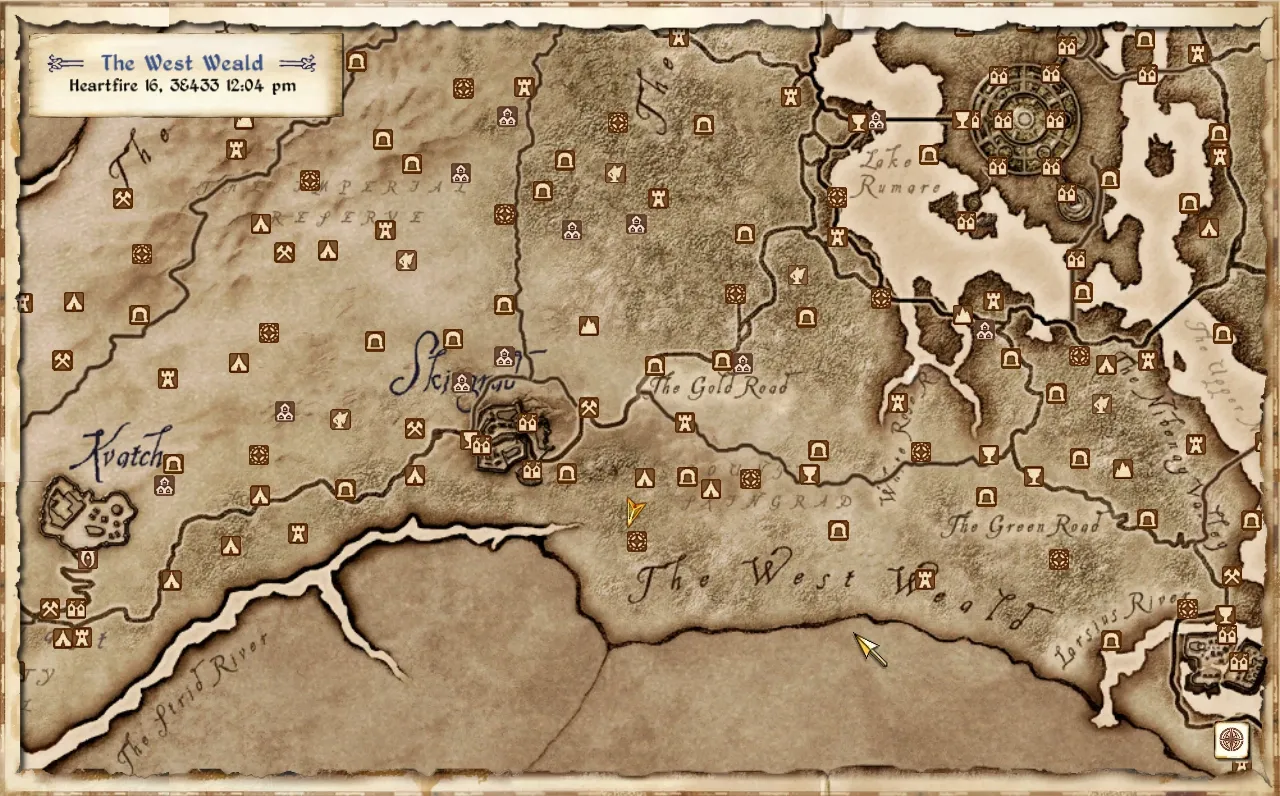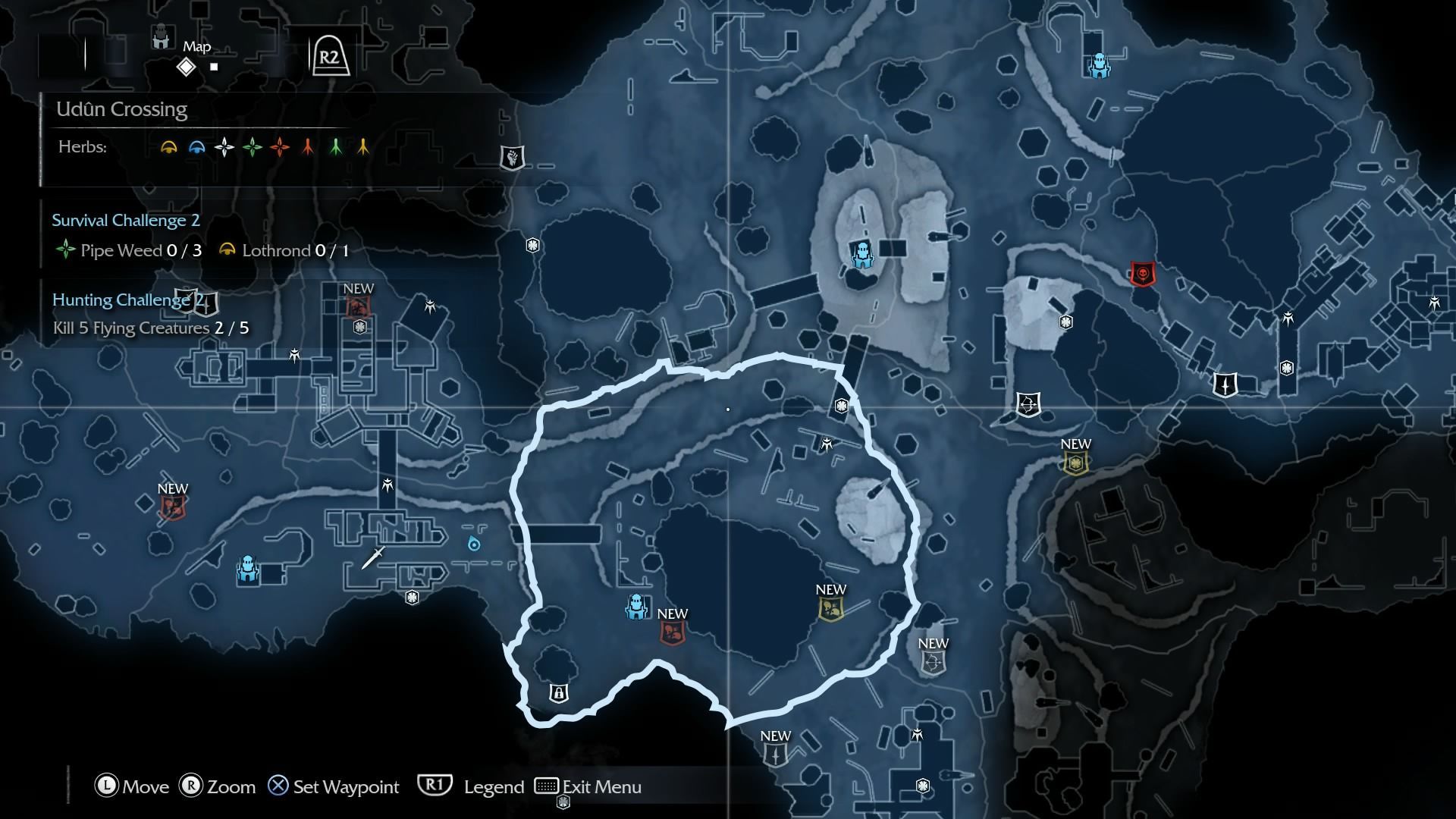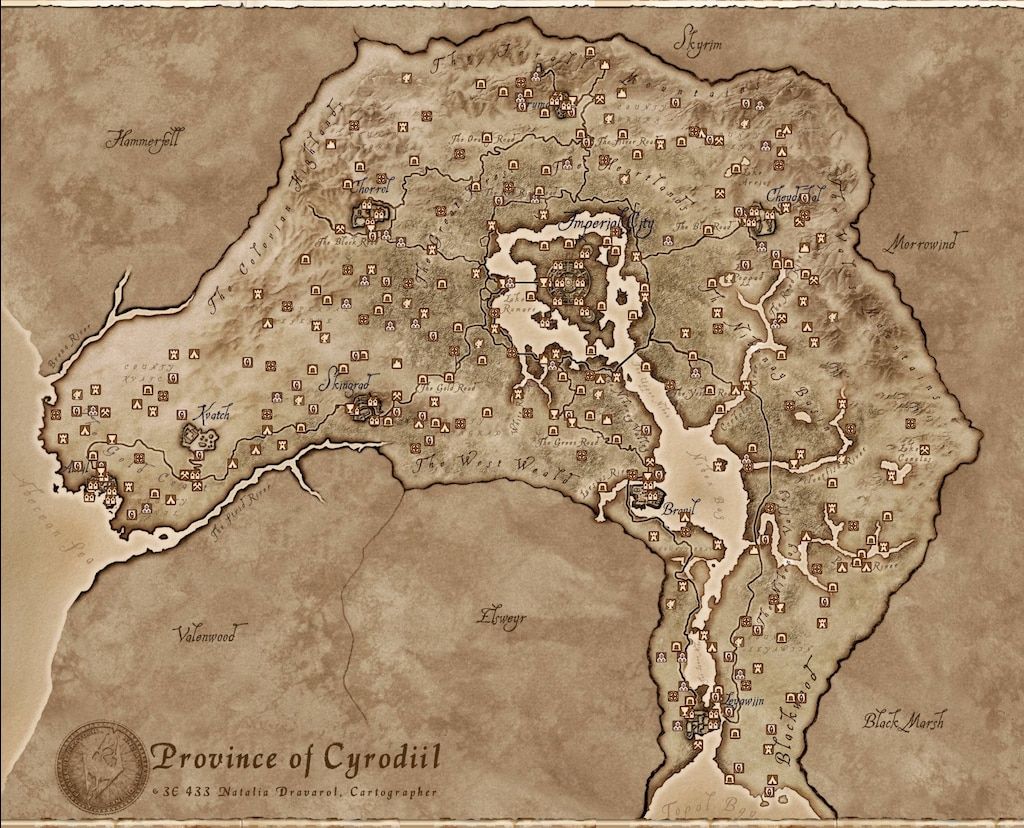Maps are, by now, de rigueur for RPGs, particularly those with huge open-world systems. So when you think of maps, one of the most immediate examples would probably be that of Ubisoft’s games such as Assassin’s Creed, which are particularly notable for their garish blend of icons, abstrusely plastered over plots of buildings, grids and environments. But even that says something of the map itself: that all these points of interests, all vying for your attention, are equally important, from a shop that you can visit to sell your ill-gotten goods, to a quest-giver passively waiting for your aid. Whether that can be considered as impactful cartography is, of course, up for debate.
Then there’s the map in Elder Scrolls: Oblivion, which at first glance looks like it’s been illustrated, hand-drawn and charted by a real cartographer in the universe. Another obvious characteristic is that the map is very Tolkien-esque, as if drawn by ink and quill on a yellowed parchment. If you take a gander at the maps of Middle Earth in Lord of The Rings, you’ll see that Oblivion took clear inspiration from these maps (most high fantasy games are descended somewhat from Lord of the Rings, anyway). Maps, for Tolkien, were indispensable, used to help him plan the plot of the series, provide readers crucial context to these stories, as well as immerse readers to the universe.
Contrast this to the map of the Lord of the Rings game, Middle-earth: Shadow of Mordor, which is, oddly enough, unnaturally blue and appears more modern, while featuring the topology of buildings as well as axis lines; from its map alone you wouldn’t have guessed that it’s a Lord of the Rings game.
Unlike Mordor, Oblivion sought to follow the Tolkien tradition of map-making, even if it’s not as finely illustrated as his maps. The game is set in the province of Cyrodiil, which is also known as the Imperial Province or the capital province of the human empires in Tamriel, one of the Elder Scrolls series’ many continents. And what we know of maps, in essence, is that they are more than just a way to inform people of the specifics of a province, country or region, but they’re also inherently political, capable of shaping our collective worldview, while also a reflection of the cartographer’s priorities. As such, it’s no surprise that the Imperial City is at the centre of the Cyrodiil map, and easily its most prominent landmark. This tells its users that this is the very focal point of the province, one that visitors to the land must absolutely visit. From another perspective, it also implicitly suggests that the Imperials are the most esteemed race of men in Tamriel. Given that the symbol of the Imperial Legion (which is the Imperial army) was stamped next to the name of the cartographer—an individual named Natalia Dravarol, who is said to have made this map in 3E 433—it could be that Natalia themselves is an Imperial, or a map-maker who works for the Legion.
The form of the map encourages exploration too. Unlike the more accurate maps of other games, Oblivion’s maps feature jagged and imprecise contours, with paths and routes you can follow. There’s also an abundance of rivers to navigate around. Key towns, mountain ranges, plains and regions are also pointed out, with the player eventually discovering places of interest—from fortresses to inns—the more they explore. But with a map full of icons, these also eventually become very Ubisoft-esque, where the map becomes cluttered with things to busy yourself with. Devoid of these icons, the lines of the map drive some degree of ambiguity, and you’re meant to follow them to discover more places—and that’s when pinnable map markers make this ultra handy. And of course, the sheer size of the map also points to how much of Cyrodiil there is to uncover, adding to the depth and expansiveness of Cyrodiil.
In contrast, the in-game map of Skyrim has left behind the Tolkien roots of the Oblivion’s map, opting for a more realistic, mountainous overview of the province, littered with icons that hover above. It may be a more visually striking snapshot of Skyrim than Oblivion, but it also lacks a specific aesthetic that the Oblivion map managed to convey. While Skyrim’s map is made for the player behind the screen, Oblivion’s one is crafted specifically for wandering adventurers in Cyrodiil. It speaks directly to the character embodied by the player—the Hero of Kvatch, the Champion of Cyrodiil, the Divine Crusader—rather than the player themselves, adding yet another crucial layer of immersion.



